Journal
Learn from my Marking Pencil Mistake
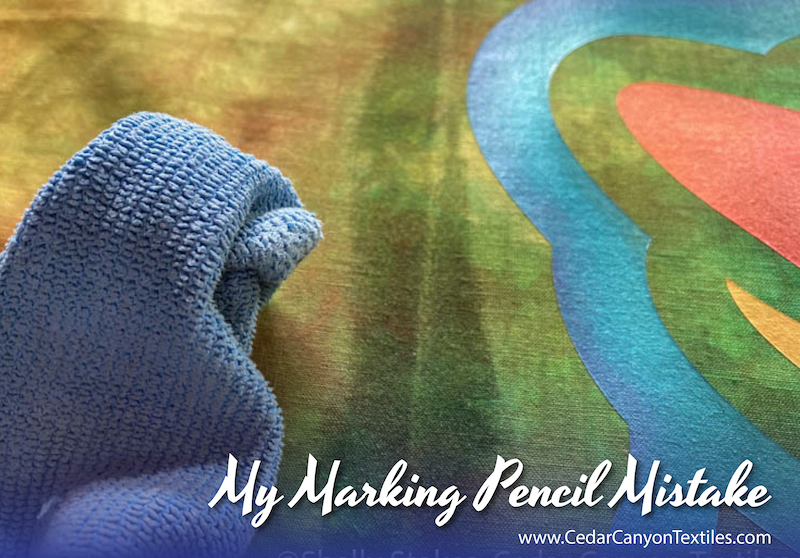

As I was preparing the fabric for my next large stitched painting, I thought I would be really smart and mark a line on the fabric for lining up the stencil. Instead, I made a doozy of a Marking Pencil Mistake. Oops!
As much as I hate making (and admitting!) that I made this massive boo-boo, I decided to share my experience in the hopes that you will avoid a similar mistake. Here’s how it unfolded.
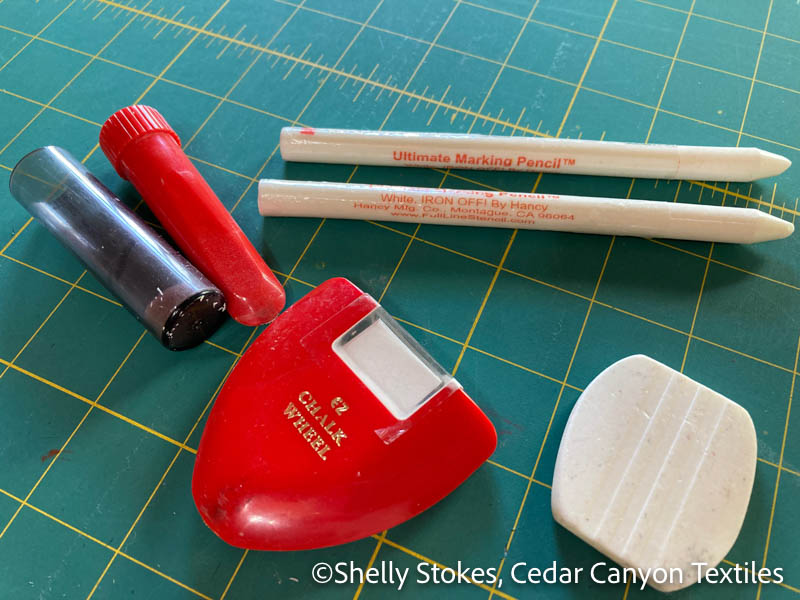
When I was cleaning up my studio a while back, I put a bunch of marking tools in a bag. Two were chalk, one was a tailor’s marker, and the pencils were a tool that I picked up at a quilt show some time ago.
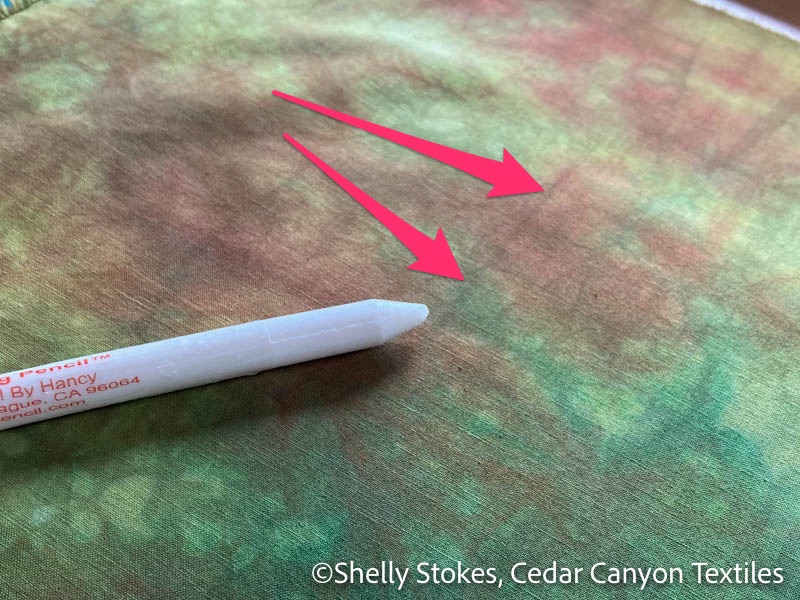
Now the premise of these marking pencils is that the marking can be removed with a quick pass of a hot iron. I know I have used them on a previous project, so I didn’t think twice about using them again. Unfortunately, that turned out to be a Very Big Mistake.
It was not incredibly obvious, but after running a hot iron over my fabric, there was a definite line where the mark had been. Now, this would not be a big deal if the mark was on the edge of something where it wouldn’t show. But this line was less than an inch away from the design, and it would definitely show on the surface of the stitched painting.
Rather than letting Art Brain pitch a fit, I walked away from this for a couple of days to see if any ideas surfaced for rescuing the painted fabric. Surely, there would be a way to remove this mark. Maybe? Pretty please?
Mark Removal Step 1
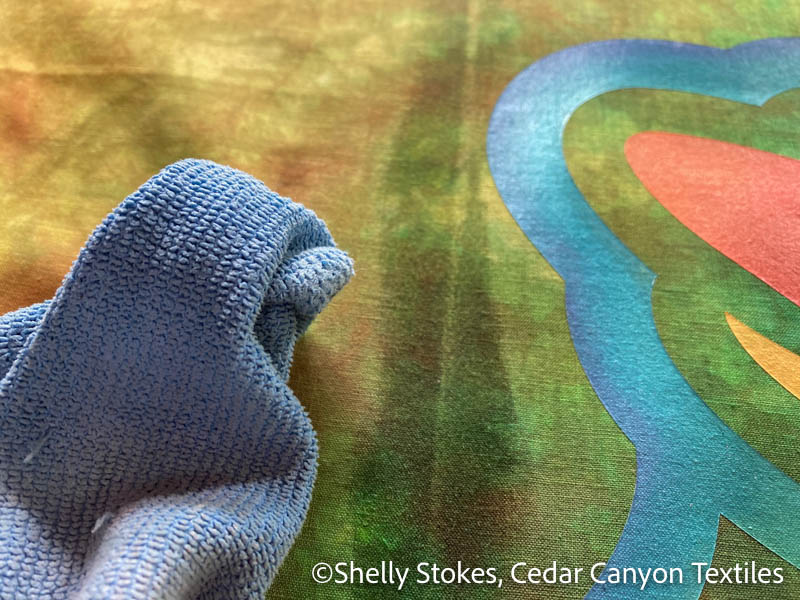
My first inclination was to take a damp lint-free cloth to see if I could scrub the marks off with just water.
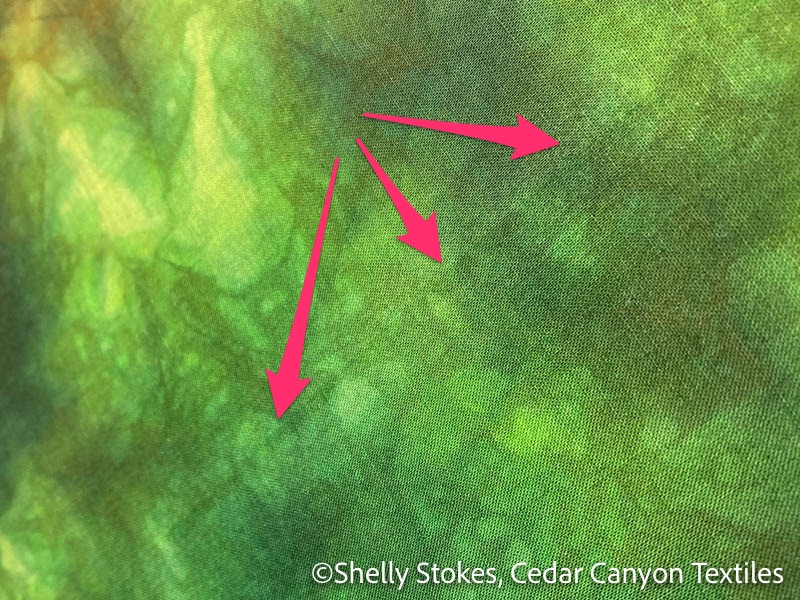
Unfortunately, that didn’t work.
Mark Removal Step 2
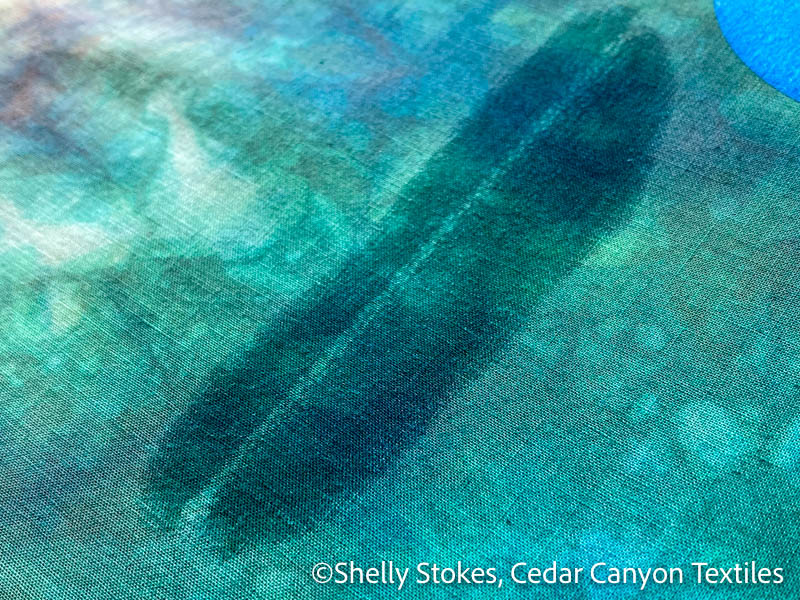
As you can see, when I dampened the fabric again, the mark was still very much in evidence.
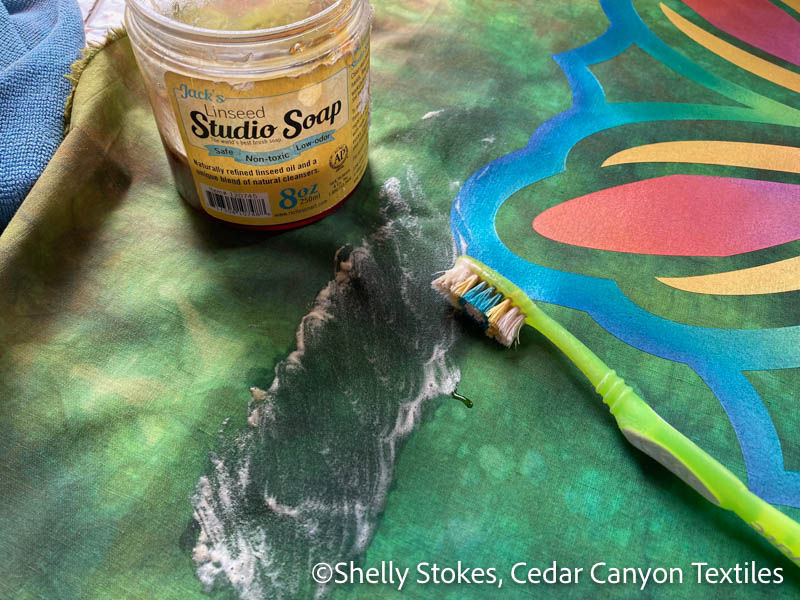
My next alternative was my jar of handy-dandy oil-based studio soap. I use this stuff for all manner of stains and for removing Paintstik colors from my hands, my jeans, and anything else that needs a clean up. (I even keep a jar next to my washing machine for treating food stains and other tough cleaning jobs.)
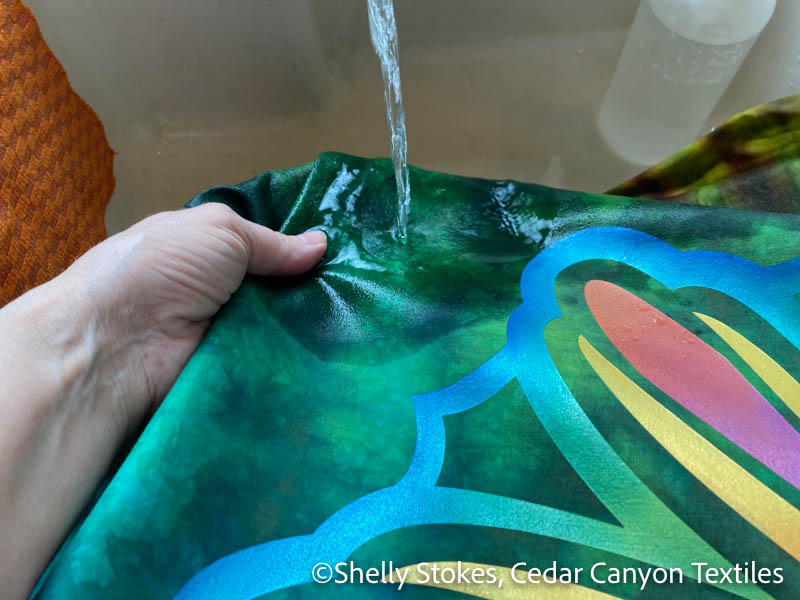
I scrubbed and scrubbed with an old toothbrush and then rinsed to remove the studio soap.
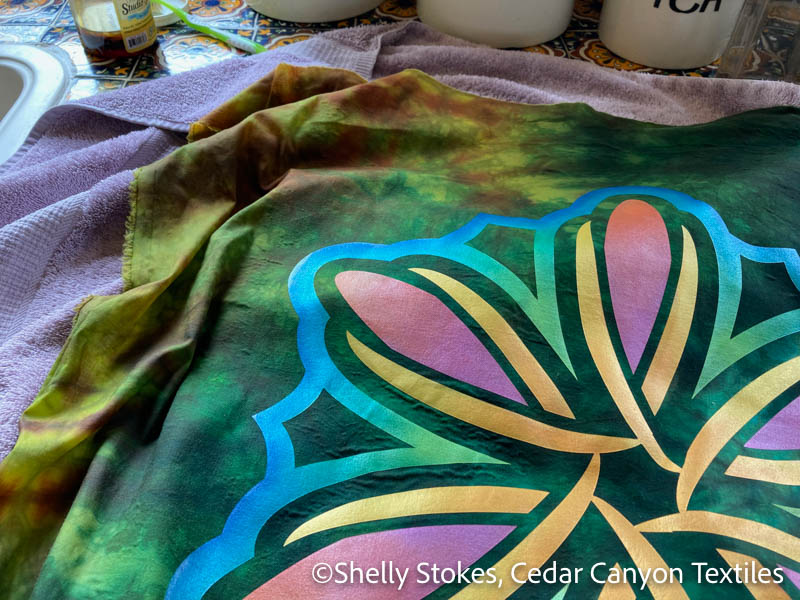
As I removed the excess water with a towel, I could see that only a really good pressing was going to save this piece. But… would the lines be gone?
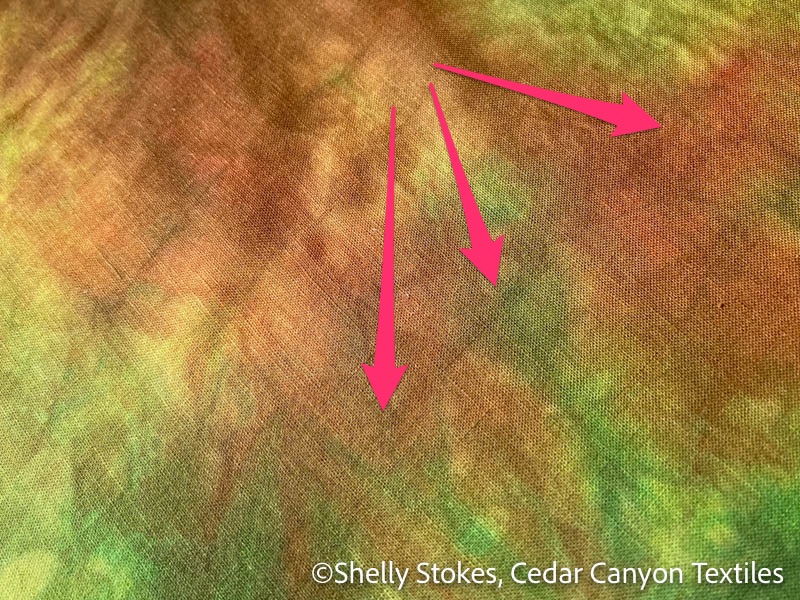
Ummm… nope. Not a chance. The lines were slightly less noticeable, but far from gone. Drat! My marking pencil mistake was not going away!
Test, Test, Test to Avoid a Marking Pencil Mistake
I’ll be the first to say that I hate making mistakes like this! After 25 years of quilting, sewing and fiber art, I should know better than using a marking tool in an obvious spot without testing to make sure that the lines would completely disappear.
A few short minutes to do a test, or a visit to the manufacturer’s website would have saved me a lot of time and frustration, not to mention a beautiful piece of fabric! As it turns out, the manufacturer was aware that this pencil would leave marks on some fabric, and the warning was right on the product description page.
Please note: This pencil has been known to shadow on some fabrics: random batiks and cotton/poly blends. On some batiks it’s fine, we actually demo a lot on batiks at shows. With all the different varieties out there and our inability to test them all we recommend testing this pencil to be sure it irons off clean.
So… long story short, this was a marking pencil mistake that did not need to happen, and I couldn’t blame anyone but myself. Phooey!
Moving on…
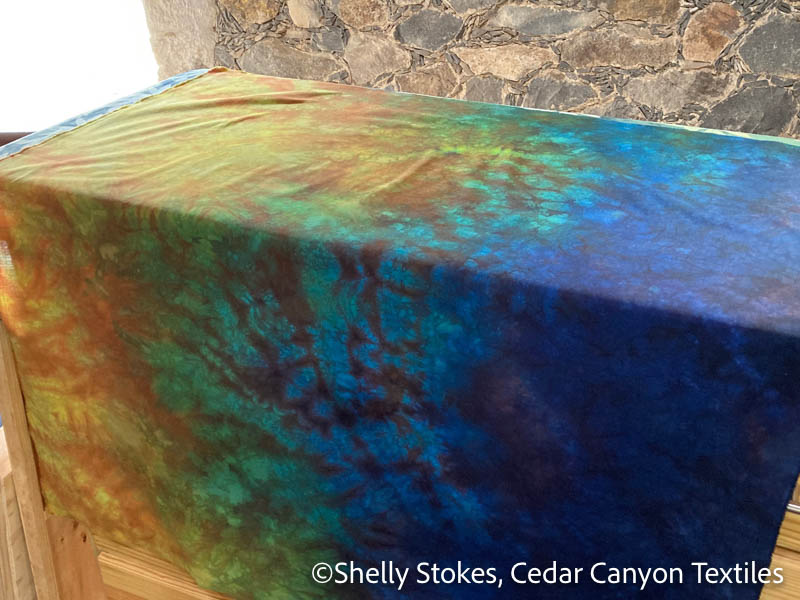
Thankfully, I still have a large piece of this fabric and I can paint another piece. I’ll put my mistake aside for a while while I ponder its fate, and I’ll be happy that I discovered my Marking Pencil Mistake before I started stitching and beading. (Yes, it could have been worse!)
And, finally, I Promise, Promise, Promise that I will Never Ever use a making tool in a conspicuous location without testing to make sure the marks can be removed.
Thanks for reading
Thanks for the opportunity to be a part of your creative world. I appreciate your time and hope that my mistake will save you a bit of time and frustration in the future. 😉 And if you have a favorite technique or marker to suggest, chime in below. I’m all ears!

There is an old saying “Too soon we grow old. Too late we grow smart”.
Oh yes! We are “supposed” to be wiser as we add years. Maybe in my next life??? 😉
My immediate 1st thought was that the line was not terribly noticeable in many places. I think that with some Tsukineko gentle brush work those spots could have been disguised and blended into oblivion!
The fabric itself has so many steaks of color change, some not even subtle, that a little addition here and there would have never been noticed.
And remember, your eyes will always go to that spot that no one else will see, even when you show it to them.
All good advice, Cynthia. Unfortunately, I have this very noisy inner critic that will never let this one go. I’ll find a good use for the piece, but I won’t spend tons of time on embroidery and beading on something that will bug me forever. It’s not worth the argument in my head!
Thank you for this. I have one of those markers, but don’t even remember using it. But my preferred markers are the Clover Erasable/water soluble markers. And I, too had residual after ironing. I also used water, then I ordered the Clover eraser that helped somewhat. But a few days later it did seem to have disappeard. So all was well, but it was touch and go between iron/water/eraser.
On a different subject. I hav a jar of your soup (ancient by now). Does it keep forever? I dip my brushes in odorless turpentine and the wash with your soap. But recently I am getting a risidual of color in the brush. Normal? And another question – do you recommend any small scrubber brushes. Strong scrubbers are hard to find. Thank you for your info.
After this little run-in, I’m totally paranoid about markers. I think the best advice for marking areas close to a design is the one that adds a bit of a crease without leaving any marks. I “know” I can get rid of creases!
I keep the jars of brush/studio soap forever. They don’t last too terribly long in my house. Residual color on brushes is very common with Paintstik colors. As long as the color is no longer rubbing off on a light fabric or paper towel, I call the cleaning good and put them back into the jar for the next round of painting. 🙂
From what I’ve seen on the photos, I don’t think it’s noticeable, but that’s not the same as seeing the piece, so I won’t harp on that.
But it does look like a future design opportunity on that piece. Beading and embroidery can cover a lot!
Thanks, Leila. I’m sure I could come up with something if I chose to rescue this piece of fabric. It will probably become a pillow cover or something where the markings won’t make a difference.
And you’re absolutely right! Embroidery and beads can cover a multitude of sins!
Hi, I once spilled oil, and a good bit of it, on a favorite shirt while working in a commercial kitchen. My first inclination to save it was to soak the entire shirt in oil- if the entire thing was stained, then the stain is no longer visible. I suggest you make the same marks with the same marking pencil all over your piece, and after ironing them all in, it’ll have a lovely additional texture you can chalk up to a happy accident. I’m all about happy accidents!
That’s probably the best possible solution, Tosa. I wish I had thought about that before I scrubbed the dickens out of the fabric! I’ll give it a good pressing again. If I haven’t done any damage with all the scrubbing, I’ll have a grand time with that marking pencil.